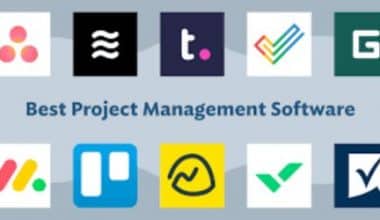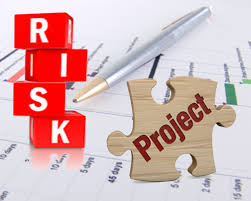When you’re in charge of a project, the triple restriction is always on your mind. But there is a fourth aspect that is equally vital but managers commonly overlook it in the midst of project management chaos: quality.
So it doesn’t matter if you obtained the best software, reached every milestone, and finished the project on time if the deliverables aren’t up to par. That is why project quality management is critical. Learn how to create a project quality management plan from this article.
What Is Project Quality Management?
Project quality management comprises the processes and activities needed to determine and achieve the quality of a project’s deliverables. Quality, on the other hand, might be a difficult concept to grasp.
What is Quality?
Quality in project management simply refers to what the client or stakeholder expects from the project deliverables. Quality management can have a narrower focus by keeping the definition related to the customer or stakeholder, which means it is more likely to achieve its goals.
Concepts for Project Quality Management
Project managers are in charge of putting a project quality management plan into action. Again, the basic notion is to produce a product or service that meets the needs of the client or stakeholder. This necessitates familiarity with quality management ideas.
#1. Customer Satisfaction
There can be no quality without client happiness. Even if a deliverable meets all of the requirements of the client or stakeholder, if the process itself was not good, there is an issue.
Of course, the deliverable must match those standards, or the project will fail since the project’s product and management did not meet the expectations of the client or stakeholder.
As a result, adopting quality control entails controlling both the process and the people. Meet with your customer or stakeholder on a frequent basis to keep them up to date on the project’s development. Get their comments and make sure you’re being completely upfront with them to avoid problems later.
#2. Prevention Over Inspection
Quality does not come cheap. The Cost of Quality (COQ) is the money spent dealing with issues during the project and then fixing any faults after the project. These are divided into two categories: conformance costs and nonconformance costs.
- The cost of conformance can be thought of as a preventative expense. These expenses are generally related to training, the paperwork process, the equipment required, and the time required to complete the job correctly. Testing, destructive testing loss, and inspections are examples of additional costs associated with this.
- The cost of nonconformance refers to the expenses of internal failure. These include needing to redo or even scrap something totally. Liabilities, warranty work, and lost business can all result in additional expenditures.
#3. Continuous Improvement
The notion of quality project management refers to a continuing endeavor to improve deliverables over time. The opportunity to identify and address change is always present, whether through little, gradual adjustments or massive ones.
Applying this approach also entails regularly monitoring and documenting any issues that arise, so that you may apply what you’ve learned when managing future initiatives. In this manner, you can run a more efficient project and avoid making the same mistakes.
How to Put Quality Project Management Plan in Place
Once you have a general understanding of the various principles, the following stage is to put in place a project quality management plan. To do so, take the following three steps:
#1. Quality Plan
First, determine the quality requirements for the deliverables and how the project should be managed. So, determine how this process will be documented and how the information will be supplied. Will there be regular meetings, emails, and so on?
These elements, as well as measures for monitoring quality while managing the project, will be included in the plan. This should include a quality checklist for collecting and organizing the marks you need to achieve during the project.
#2. Quality Control
Quality assurance refers to the planned and systematic operations carried out in a quality system to ensure that the quality requirements of a product or service are met.
Use quality assurance to ensure that your processes are actually operating to ensure that project outputs meet quality standards. A process checklist and a project audit are two methods for accomplishing this.
#4. Quality Assurance
Every process requires an enforcer, so to speak, to ensure that the rules are followed and the expected quality is met. Peer reviews and testing are two methods for ensuring that they meet the requisite quality of deliverables.
It is critical to monitor the quality of deliverables during the project management process in order to alter them if they do not satisfy the standards that have been established. This can be done at the conclusion of the project, but redoing rather than readjusting is less efficient.
What should an Effective Project Quality Management Plan Include?
The quality management planning process identifies the quality standards that apply to the project and devises a strategy to meet them. The purpose is to develop a quality management plan that includes the following:
- The manner in which the team will carry out the quality policy
- The method through which the project’s and product’s quality will be ensured throughout the project
- The resources necessary to ensure quality
- The extra tasks required to carry out the quality plan
Identifying these factors may need changes to the project management plan or schedule, emphasizing the ever-changing nature of the plan and project materials. The project manager writes the plan, together with the other components established during the planning process, with input from stakeholders. Follow the corporate quality policies in place when planning for quality on a project. If a corporate quality policy does not exist, the project team should develop one for the project. The project team may even need to modify an existing policy to better suit the project’s needs.
Benefits of Project Quality Management
The following are the advantages of project quality management:
- Products of high quality
- Customer gratification
- Enhanced productivity
- Monetary profits
- Removes silos/improves teamwork
Project Quality Management Tools
Tools for quality management include:
#1. Affinity diagrams
Affinity diagrams generate, organize, and combine data about a product, process, complicated issue, or problem. It expresses thoughts without attempting to quantify them (brainstorming sessions).
#2. Process decision-making program charts
One of the seven management and planning tools. Process decision program charts depict the stages required to complete a process and analyze its impact. These charts aid in identifying potential problems and planning for them.
#3. Diagrams of interrelationships
Interrelationship diagrams are diagrams that depict cause and effect relationships, according to SixSigmaDaily. These diagrams identify variables that occur when working on a project, as well as which areas of the project those variables may affect.
#4. Prioritization matrices
During brainstorming meetings, use prioritization matrices to analyze distinct topics based on predefined criteria in order to build a prioritized list of items. It aids in identifying potential issues and determining which problems to address first in order to achieve specific goals.
#5. Diagrams of networks
This is a graphical representation of a project’s schedule. It aids in the planning of the project from start to finish. It depicts the scope of the project as well as the crucial path of the project. There are two kinds of network diagrams:
- Arrow diagram
- Precedence diagram
#6. Matrix Diagrams
A matrix diagram is used to analyze data inside the structure of an organization. The matrix diagram depicts the relationships that exist between the rows and columns that comprise the complete matrix’s objectives, factors, and causes. Depending on the number of items and groups of items to analyze, many types of matrices can be used.
The various forms of matrix diagrams and their applications:
- L-shaped matrix: This matrix establishes a connection between two objects.
- T-shaped matrix: This matrix establishes a connection between three sets of items.
- The Y-shaped matrix establishes a link between three groups of items, although it is depicted in a circular figure.
- C-shaped matrix: This matrix, which is shown in 3D, creates a relationship between three sets of elements.
- X-shaped matrix: This matrix establishes a connection between four sets of items.
Software for Project Quality Management
The management of project quality is multidimensional. Your team must: grasp the quality expectations; decide how you will measure if you are fulfilling those standards; and execute any necessary changes along the route. The ideal job management tool allows you to track all of these variables in a single, simple location.
What are the quality metrics used in Project Quality Management?
Quality metrics are numerical values that measure the quality of the project deliverables and processes. Some examples of quality metrics are customer satisfaction, defect density, on-time delivery rate, and cycle time. These metrics help measure the performance of the project and identify areas that need improvement.
How does Project Quality Management ensure customer satisfaction?
Project Quality Management helps ensure customer satisfaction by setting customer requirements and expectations, and then measuring the performance of the project against these requirements. The goal is to consistently meet or exceed customer expectations and deliver high-quality products and services.
What are the risks associated with poor Project Quality Management?
Poor Project Quality Management can result in project delays, cost overruns, and poor customer satisfaction. It can also result in the delivery of low-quality products or services, which can damage the reputation of the company and lead to loss of business.
What is continuous improvement in Project Quality Management?
Continuous improvement is the ongoing process of identifying areas for improvement and making changes to enhance the performance of the project. In Project Quality Management, continuous improvement is essential for ensuring customer satisfaction and continuously delivering high-quality products and services.
How can Project Quality Management be improved?
Project Quality Management can be improved through the implementation of best practices, the use of quality tools and techniques, and the involvement of all project stakeholders. It can also be improved through the use of technology, such as Project Quality Management software, and through the ongoing evaluation and improvement of processes and procedures.
What is the future of Project Quality Management in the project management industry?
The future of Project Quality Management is expected to be heavily influenced by advancements in technology, such as artificial intelligence and machine learning. These technologies will likely be used to automate and streamline quality processes, and to improve the accuracy and speed of quality decision-making. Additionally, the increased focus on customer satisfaction and the delivery of high-quality products and services will continue to drive the importance of Project Quality Management in the project management industry.
Project Quality Management FAQs
Why is quality important in project management?
Without adequate quality planning, a project runs the risk of the client being dissatisfied with the deliverables.
What does a project quality manager do?
A project quality manager’s primary role is to ensure that products or services are delivered according to specifications in order to satisfy consumers or stakeholders.
What are quality tools in project management?
There are seven basic quality tools that have been identified as being appropriate for use in both the quality management plan and the quality control processes. Cause-and-effect diagrams, flowcharting, check sheets, Pareto diagrams, control charts, histograms, and scatter diagrams are known as Ishikawa’s seven basic tools of quality.
- Ansoff Matrix Explained: Practical Examples, Theory, & Strategy
- Strategy Engagement: How to Plan an Effective Engagement Strategy
- Project Scope Statement: Guide for Creating a Scope Statement with Examples
- Stakeholder Analysis: Definitive Guide To The Stakeholder Analysis Process
- Project Cost Management: How to Create a Cost Management Plan






